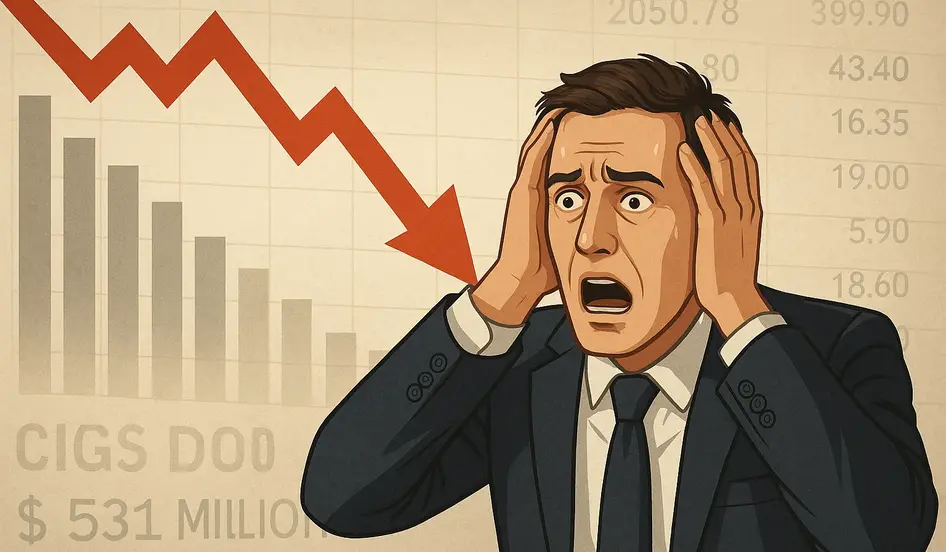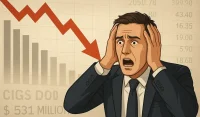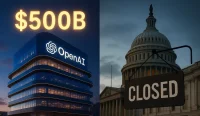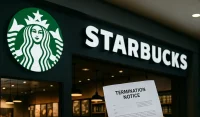US economy crashes scenario represents one of the most catastrophic possibilities facing the world’s largest economy, with a GDP exceeding $30 trillion and serving as the foundation of global financial stability. While this remains a hypothetical scenario, understanding the potential consequences is crucial for policymakers, investors, and everyday Americans who would face unprecedented challenges if such a collapse were to occur.
The United States, despite being the wealthiest nation on Earth, faces numerous vulnerabilities that could potentially trigger an economic collapse. These include rising inflation, increasing unemployment, slow economic growth, mounting national debt exceeding $36 trillion, and political instability that undermines investor confidence. The combination of these factors creates a perfect storm that could lead to stagflation – a particularly dangerous economic condition that’s extremely difficult to resolve.
An economic collapse wouldn’t happen overnight but would be preceded by warning signs that economic experts have been predicting for months. These include headlines dominated by talk of economic downfall, decreasing value of the US dollar, steadily increasing living costs, and rising fears around the globe about America’s economic stability. When these factors combine with political dysfunction and policy uncertainty, the risk of economic collapse becomes significantly higher.
Day One: The Initial Collapse and Immediate Impact
US economy crashes would begin with the stock market experiencing its worst day in almost a century, surpassing the 2008 recession and rivaling the Wall Street Crash of 1929 that led to the Great Depression. This collapse wouldn’t occur in isolation but would be the culmination of weeks or months of economic deterioration and political uncertainty.
The average American, earning around $66,000 annually, would wake up to a world where their financial security has been fundamentally compromised. With mortgage payments, energy bills, groceries, healthcare, and childcare costs already straining their budget due to inflation, the economic collapse would push them from financial stress into genuine crisis. Their ability to afford even basic necessities would be severely compromised.
Household wealth values would drop dramatically, similar to the 2008 recession where household wealth plummeted by $11 trillion and house prices fell by up to 20% across the country. Between 2007 and 2011, one in four American households lost a staggering 75% of their wealth, and a modern collapse could be far worse given the current economic vulnerabilities.
Business owners and financial experts would watch in horror as the stock market collapses, with companies losing huge amounts of value in next to no time. Even billionaires would see their net wealth plummet as their assets, largely tied to stocks and shares, lose value rapidly. The snowball effect of panic selling would create a self-reinforcing cycle of economic destruction.
Building Stability in Times of Crisis
An economic collapse threatens financial security for millions — from families to businesses. Employers can play a vital role in recovery by hiring resilient talent that helps stabilize industries and communities. Post your job on WhatJobs today and connect with professionals ready to restore strength during uncertain times.
Post a Job Free for 30 Days →Day Two: Escalating Crisis and Government Response
US economy crashes would force immediate government action as President Trump and his administration scramble to address the crisis. The White House would be inundated with real-time updates from financial experts and aides, providing predictions about the coming days and policy recommendations to limit the chaos, even if it cannot be completely stopped.
The government would likely attempt to implement emergency measures similar to those used during the 2008 financial crisis. The Emergency Economic Stabilization Act provided a $700 billion bailout package for America’s banks, and similar measures might be attempted. However, obtaining bipartisan support for such measures would prove extremely difficult in the current political climate.
Alternative strategies might include implementing tariffs on various countries to strong-arm them into more favorable trade deals, but this approach could backfire as other nations retaliate with their own tariffs, further weakening the US economy. The administration would face the challenge of implementing multiple strategies simultaneously while dealing with political resistance and international pushback.
Meanwhile, the average American would face increasing anxiety about their job security and financial future. With an average debt of $105,000 and savings of just over $5,000, the prospect of job loss would create genuine fear of homelessness and financial ruin. The psychological toll of economic uncertainty would begin to manifest in stress, anxiety, and desperation.
Day Three: Supply Chain Disruption and Panic Buying
US economy crashes would begin to affect supply chains as vendors and suppliers around the world lose confidence in the US economy. Bills wouldn’t be paid, debts would rise, and the government’s tariffs would take their toll, with certain countries refusing to ship materials and supplies to the US.
This supply chain disruption would trigger panic buying similar to what occurred during the COVID-19 pandemic. Americans would rush to stores to stock up on essential supplies, creating long lines and empty shelves. Grocery stores would struggle to cope with the crowds, and restrictions would need to be implemented to prevent complete chaos.
The business owner would face the difficult decision of laying off workers as revenue plummets and costs remain high. With supply chain disruptions and decreased consumer spending, businesses would be forced to downsize operations, lay off employees, and implement cost-cutting measures to survive the crisis.
Social media would become a battleground of information and misinformation, with discussions about the economic collapse dominating online discourse. Bot armies deployed by America’s enemies could spread misinformation, stoke flame wars, and incite criminal acts like looting and rioting among the population.
Resilience in Supply Chain Disruption
Supply chain breakdowns and panic buying test the strength of businesses and communities alike. Employers can lead the recovery by hiring skilled professionals in logistics, operations, and crisis management. Post your job on WhatJobs today and connect with candidates ready to keep supply chains moving during uncertain times.
Post a Job Free for 30 Days →Day Four: Market Closure and Banking Crisis
US economy crashes would reach a critical threshold when the stock market loses more than 20% of its value, triggering automatic market closure. This would be only the fourth time in history that markets have been closed due to major events, following the assassinations of presidents, global conflicts, and the 9/11 terror attacks.
The market closure would prevent further immediate losses but wouldn’t solve the underlying problems. In fact, it might spread more chaos as investors realize they cannot access their funds or make trades. The psychological impact of market closure would be devastating, signaling to the world that the US economy has reached a crisis point.
Banks would face massive runs as people, including the average American, wait in long lines to withdraw whatever money they have, fearful of imminent bank collapse and the possible loss of their life savings. The demand would outweigh supply, and banks would begin running out of cash, forcing them to impose strict withdrawal limits.
This banking crisis would create a vicious cycle where people’s fears about bank stability become self-fulfilling prophecies. As more people withdraw their money, banks become less stable, which encourages even more people to withdraw their money, further destabilizing the financial system.
Day Five: Hyperinflation and Government Desperation
US economy crashes would force the government to resort to desperate measures, including executive orders to address the crisis. The Federal Reserve would be ordered to print more money to cover imminent issues, but this would have adverse effects, causing the value of the dollar to drop even further and transforming inflation into hyperinflation.
The average American would feel the sting of hyperinflation as their money, whether in wages or savings, rapidly loses value. The cost of goods would increase exponentially, and people would fear being priced out of even the most basic essential goods. This would create a surge of crowds to banks and grocery stores, with stores implementing pandemic-style restrictions.
The US debt ceiling would become a critical issue as the government approaches its borrowing limit. If the ceiling is reached, the US would default on its debts, making the situation much worse. An urgent call to Congress would be made to increase the debt ceiling, but political infighting could prevent this from happening.
Civil disobedience, riots, and looting would begin to occur in certain parts of the country as tensions boil over. Social media would be dominated by videos showing citizens battling over basic necessities like bread and bottled water, or security guards fending off aggressive shoppers trying to force their way into stores.
Day Six: Business Collapse and Political Failure
US economy crashes would force many businesses to contemplate shutting down completely. With supply chains dwindling, sales at all-time lows, and no clear signs of improvement, businesses would be unable to maintain their current operations. Large-scale terminations would become necessary, laying off numerous workers and significantly downscaling operations.
Banks and financial institutions would freeze loans and lines of credit or demand urgent repayments, putting businesses in even more financial distress. The business owner would be forced to act more decisively and dramatically in their downsizing, potentially shutting down their business entirely.
In government, President Trump would face the critical test of Congress’s vote to raise the debt ceiling. While the ceiling has been raised 103 times in US history, political tensions and heated debate could prevent this crucial measure from passing. If the bill fails, the US would default on its debts, dramatically decreasing confidence in the economy and sending global markets into a spiral.
The political failure would have global consequences as foreign investors rapidly sell off their shares of American companies, and the value of the dollar drops even lower. America’s enemies would begin plotting to take advantage of this moment of unprecedented weakness.
Day Seven: Complete Chaos and Social Breakdown
US economy crashes would reach a point of complete chaos by the end of the first week. The average American would know that their days at work are almost certainly numbered, having stocked up on supplies and withdrawn their savings. They would be forced to consider drastic measures to keep their family fed and safe.
Essential goods would become scarcer and less affordable, and government subsidies and benefits like Social Security would no longer be reliable. Some communities would band together to help one another through the crisis, but not everyone would be so lucky. Many Americans might consider leaving the country to start fresh elsewhere.
The business owner would be on the brink of shutting down, with staff reduced to a skeleton crew and revenue dwindling. They would face the turmoil of having forced multiple hard-working employees into unemployment and the imminent end of their business dreams.
President Trump’s approval rating would be at an all-time low as the general public blames whoever is in charge. With America’s power on the global stage waning, he would have to resort to more desperate measures, potentially including contacting allies in Europe or major trade partners in China to assure them that the crisis would pass.
Rebuilding Amid Chaos
In times of economic collapse and social breakdown, businesses and workers face immense uncertainty. Employers can be a source of stability by hiring resilient talent committed to rebuilding industries and communities. Post your job on WhatJobs today and connect with professionals determined to restore stability and growth in difficult times.
Post a Job Free for 30 Days →The Long-Term Consequences and Global Impact
US economy crashes would have devastating long-term consequences that extend far beyond the initial collapse. Cities could be lit ablaze with riots, mass brawls could erupt on the streets, and protestors could even reach the White House, forcing the president into hiding as he scrambles for any solution.
At an international level, US assets would be seized, deals with American businesses would be canceled, and many markets would stop accepting payments in dollars altogether. America’s biggest enemies would profit from the situation, with China eager to take America’s place as the world’s leading economic force.
The collapse would represent a fundamental shift in global power dynamics, with the US losing its position as the world’s leading economic power. The consequences would be felt for decades, as the country would struggle to rebuild its economy and restore international confidence.
While this scenario remains hypothetical, the US economy is in a delicate state with serious fluctuations and significant uncertainty. Many analysts and experts have warned of an upcoming recession, making this scenario not as far removed from reality as one might hope.
Frequently Asked Questions
What would cause the US economy to crash?
The US economy could crash due to a combination of factors including rising inflation, high unemployment, slow growth (stagflation), political instability, mounting national debt, and loss of investor confidence, creating a perfect storm of economic vulnerabilities.
How would an economic crash affect everyday Americans?
An economic crash would devastate everyday Americans through job losses, hyperinflation, bank runs, supply chain disruptions, civil unrest, and the inability to afford basic necessities, forcing many to consider leaving the country.
What would happen to the stock market during a crash?
The stock market would experience its worst day in almost a century, potentially losing more than 20% of its value and triggering automatic market closure, preventing further immediate losses but signaling a crisis point to the world.
How would the government respond to an economic crash?
The government would likely attempt emergency measures like bailout packages, executive orders, and debt ceiling increases, but political dysfunction and international retaliation could prevent effective response, leading to further economic devastation.
A Real-World Example: John’s Economic Nightmare
John Martinez, a 42-year-old middle manager from Phoenix, Arizona, represents the average American who would face the devastating consequences of an economic crash. With a salary of $66,000, a mortgage payment of $1,800 per month, and two children in high school, John’s financial situation is already precarious due to rising inflation and stagnant wages.
“I’m already living paycheck to paycheck,” John explains. “If the economy crashed tomorrow, I don’t know how I’d survive. My savings would be gone, my house value would plummet, and I’d probably lose my job. It’s terrifying to think about.”
John’s situation illustrates how the economic crash would affect real families who are already struggling with the current economic challenges. The combination of job insecurity, rising costs, and limited savings would make it nearly impossible for families like John’s to weather an economic storm.
“The scariest part is that there’s nothing I can do to prepare for something like this,” John says. “I can’t save more money because everything costs more, and I can’t find a better job because the economy is already struggling. I feel completely powerless.”
John’s story demonstrates that an economic crash isn’t just about numbers and statistics – it’s about real people facing impossible choices about how to feed their families, keep their homes, and maintain their dignity in the face of economic devastation. The human cost of such a collapse would be immeasurable and would affect generations of Americans for years to come.




